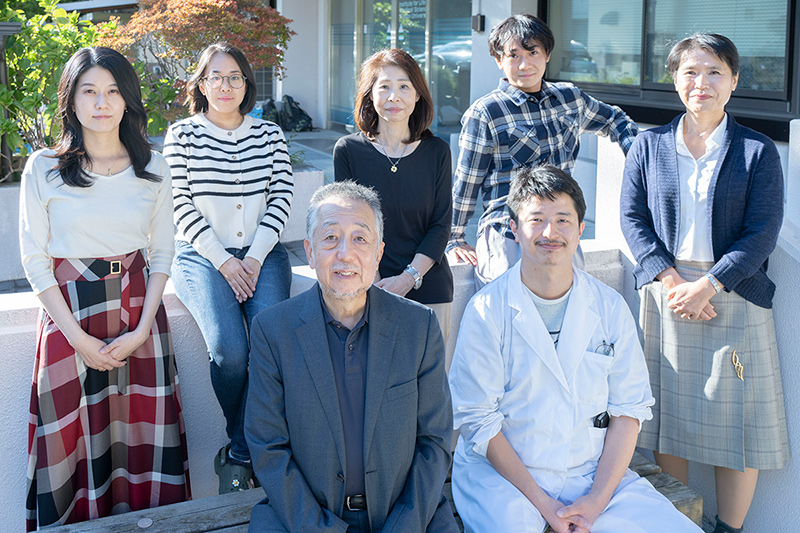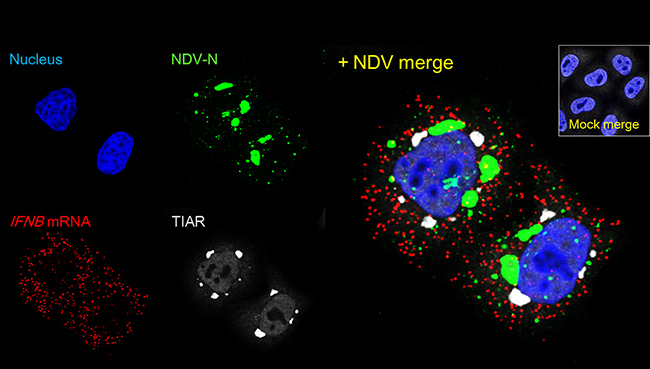
DEPATMENT OF Biosystems ScienceLAB. OF Regulatory Information
MESSAGE FROM THE LAB
RESEARCH
Virus infections are still important diseases and outbreaks of newly emerging viruses are serious problems for modern society. Higher animals, including humans, are genetically equipped with mechanisms, collectively known as innate immunity, to counteract viral infections. During the course of replication, many viruses generate double-stranded (ds)RNA, which is virtually absent in normal cells and likely serves as a “danger signal” in cells. We recently discovered that an RNA helicase, RIG-I, functions as such a sensor. The purpose of our project is to clarify the molecular mechanism underlying the antiviral innate immunity regulated by RIG-I, and to develop new diagnostic and therapeutic tools for viral infections and cancer.
 |


